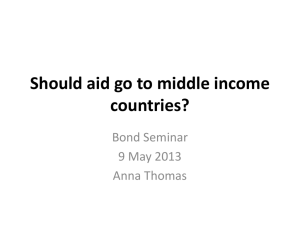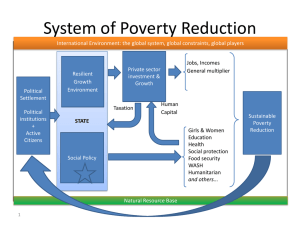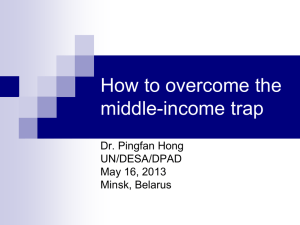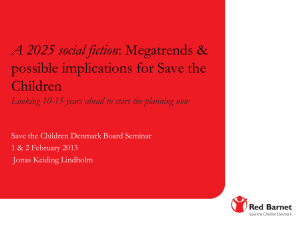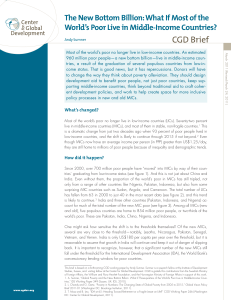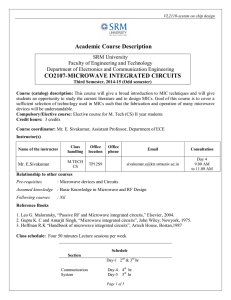Jonathan Glennie - Overseas Development Institute
advertisement
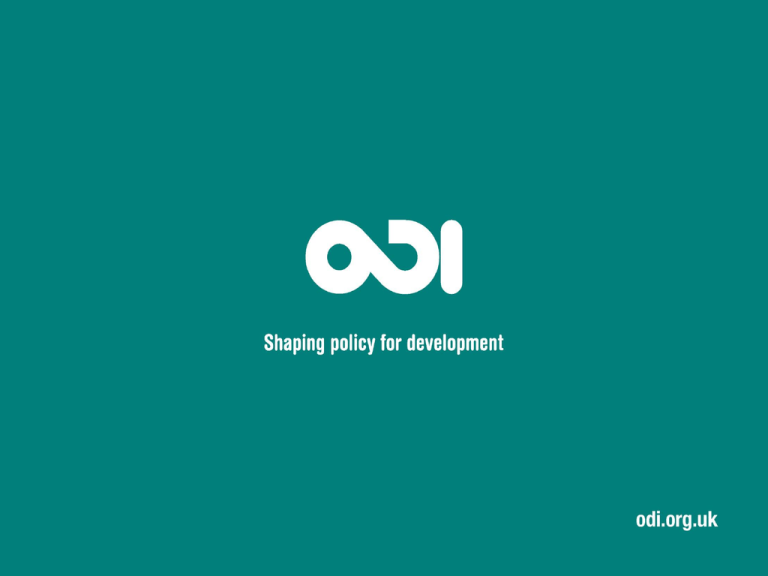
MICs and the future of development cooperation Jonathan Glennie Senior research fellow Seoul, 13-15 May 2013 1. The MIC category in a changing international context 2. Implications for international development cooperation: 2 scenarios 3 ) 1. The MIC category in a changing international context 4 Human development and income/capita (Hans Rosling) 5 Arbitrary (and stingy) cut-off points Middle income countries Low income (LIC) Lower middle income (LMIC) $1000 or $1000 less $4000 6 Upper middle income (UMIC) High income (HIC) $4000 - $12500 $12500 or more Countries graduating to MIC status since 2000 (There are now only about 30 LICs left) 7 Historically, progression has not been linear LIC LMIC UMIC HIC LDC World 8 1978 27 54 40 30 30 151 1990 48 50 35 44 43 177 2003 61 56 37 54 50 208 2012 36 54 54 70 48 213 Annual world GDP (PPP) growth rate (3-year moving average) 9 The end of poverty? (Source: World Bank) 10 Where do poor people live? (Sumner A, “Another bottom billion”, 2010) 11 Poverty is persistent in fragile states (Kharas and Rogerson, “Horizon 2025”, 2012) 12 Aid from MICs is about $15bn and rising (plus much non-monetised) 13 SSC and private funds are complementing traditional “aid” 14 Post 2015 = Sustainable development (Green D. From Poverty to Power, Oxfam, 2012) 15 An expanding set of objectives Already agreed goals MDGs Poverty eradication 16 Climate finance Adaptation and mitigation Possible future goals SDGs Broader Equitable use of natural resources and ecosystem management e.g. forests, oceans E.g. technological connectivity, security 2. Implications for development cooperation 17 Development cooperation Financial and non-financial Development cooperation (broadly defined) Financial development cooperation Non-financial development cooperation Bilateral Multilateral Private 18 Innovative (Glennie J, “From Poverty Eradication to Sustainable Development”, 2012) Recap 1. New context (power and poverty) 2. New actors/flows (public and private) 3. New challenges (planetary limits) 19 Scenario 1: Traditional view Aid declines in the medium term • Half of remaining LICs likely to “graduate” in next ten years, leaving only fragile states (and making MIC category even less useful) • MICs will graduate from grants towards loans and blended finance, private flows • Normal trading relations emerge between countries • Aid becomes history 20 Scenario 2: Challenging orthodoxy A transformation in international public finance • Orthodox definitions of poverty are narrow, the MIC category is arbitrary; global inequalities are still vast; most poor people today live in middle income countries • International presence (incl. civil society) can prove crucial for incentivising the kind of progress necessary in MICs • Sustainable Development and Global Public Goods emerge as the major framing theories of the 21st century – MICs need to develop more sustainably = more expensive • “Non-traditional” sources of development finance continue to proliferate including: South-South Cooperation; Innovative sources (taxes); Private funds 21 The vast majority of poor people continue to live in Low Aid Countries (Glennie J, What if ¾ of the world’s poor live (and have always lived) in Low Aid Countries”, 2012) 22 10 most poor-populous countries 23 Aid to MICs is likely to be increasingly effective (VFM) Need LIC LMIC UMIC (Glennie J, “The role of aid to MICs, 2011) 24 Effectiveness A global public sector: mutual benefit, mutual cost 25 Thanks for listening. odi.org.uk
